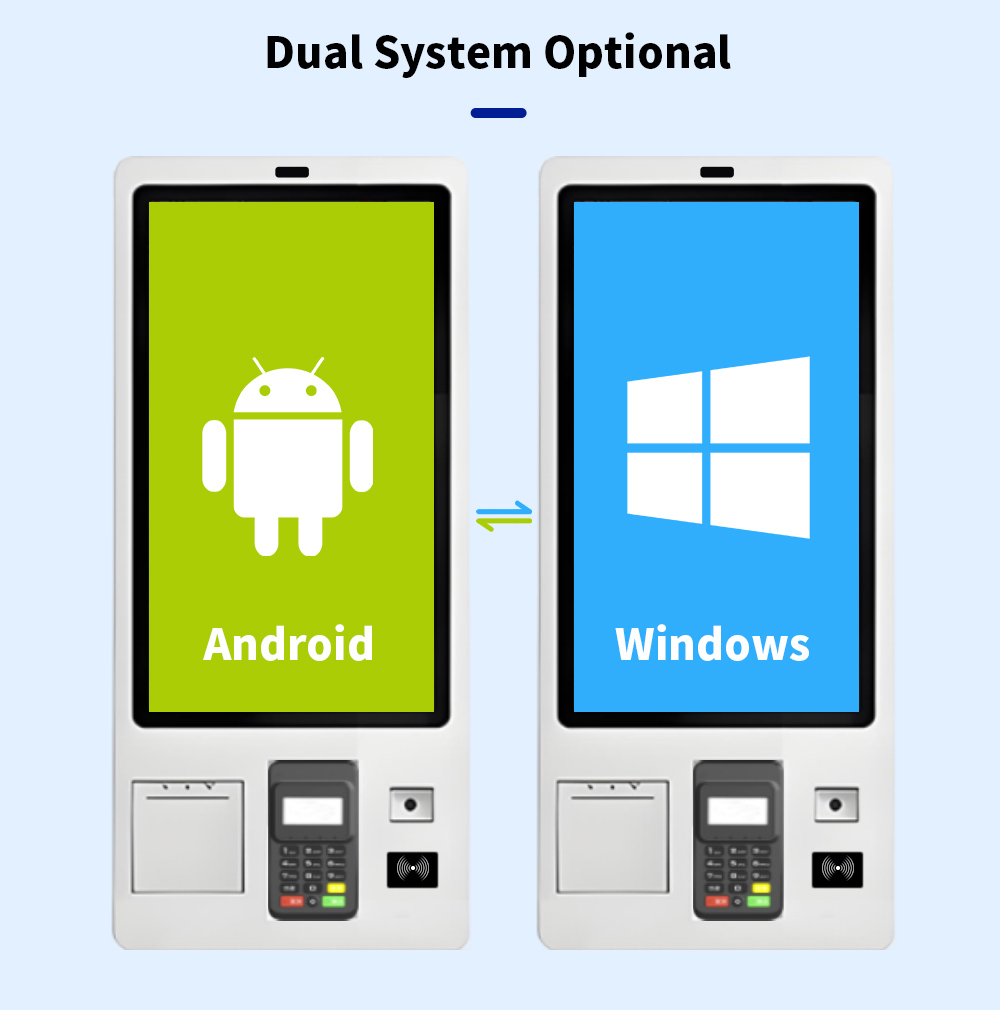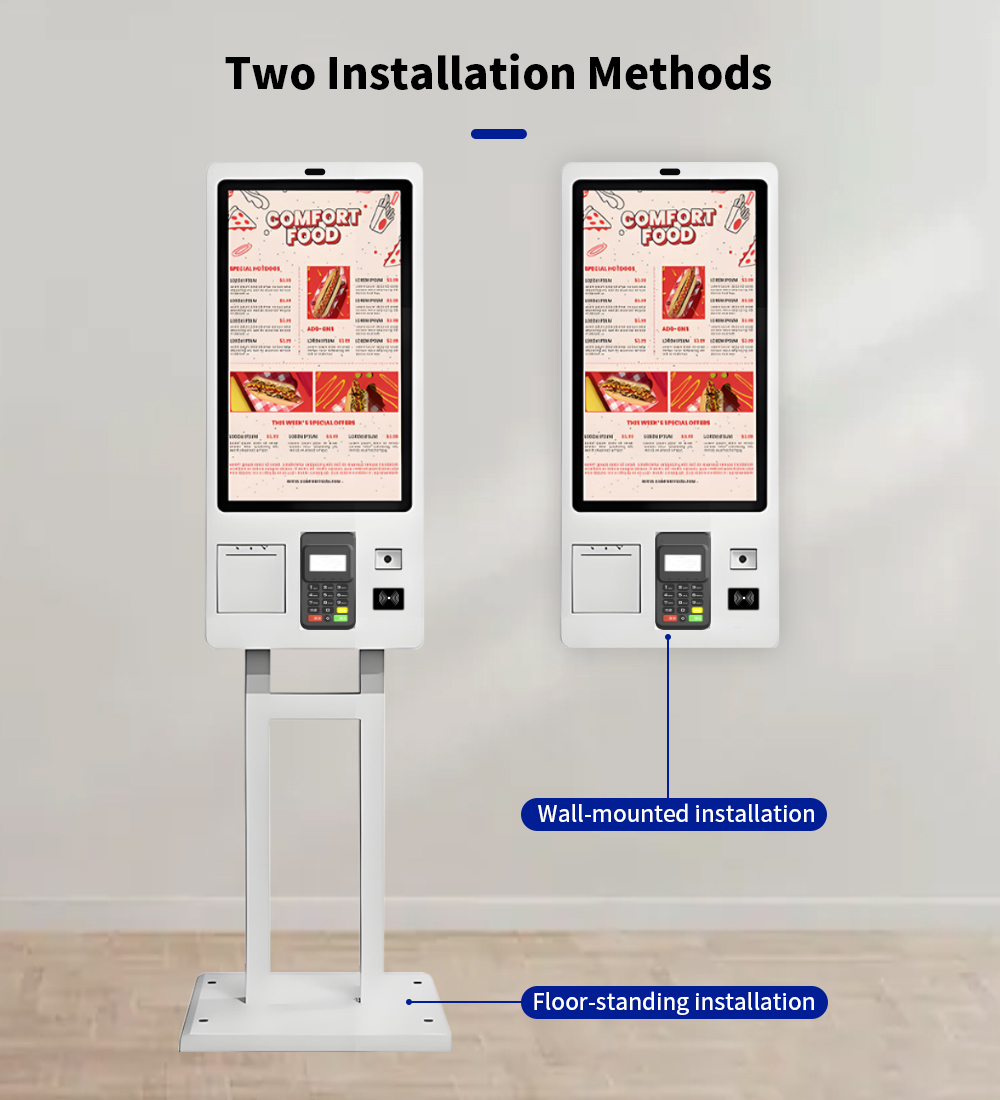Self-Ordering Kiosk in Restaurant
Self-Ordering Kiosk in Restaurant: Real Case Study (Part 1)
One of the most prominent real-world examples of Self-Ordering Kiosk implementation is McDonald’s, a global fast-food leader that began integrating kiosks into their restaurants around 2017. The primary motivation was to address long wait times during peak hours and manage increasing labor costs. McDonald’s kiosks are touchscreen stations placed strategically near the entrance, allowing customers to browse the full menu at their own pace, customize their orders, and pay directly without waiting in line for a cashier. The interface is user-friendly, showing vibrant images of menu items, nutritional facts, and suggested add-ons to enhance customer choice and increase average order value. Early results demonstrated a significant reduction in queue lengths and overall faster service times. Moreover, these kiosks allowed McDonald’s to reassign staff from cash handling to food preparation and customer support, which helped the company optimize labor efficiency. This technological shift also helped address labor shortages in the restaurant industry by reducing the need for as many front-of-house employees. Importantly, customers quickly adapted to the kiosks, appreciating the convenience and control over their orders, which improved the overall dining experience.
Self-Ordering Kiosk in Restaurant: Real Case Study (Part 2)
Building on the initial success, McDonald’s expanded its kiosk rollout across urban and suburban locations globally, integrating the kiosks with mobile app ordering and loyalty programs to create a seamless omnichannel experience. The Self-Ordering Kiosks gathered valuable data on customer preferences and purchase behavior, enabling McDonald’s to tailor promotions and menu options more effectively. This data-driven approach helped boost customer engagement and sales. Furthermore, the company used the Self-Ordering Kiosks to promote new products and combo deals, driving incremental revenue. From an operational standpoint, the kiosks reduced errors common with manual order taking, improving accuracy and decreasing food waste. The self-ordering system also enhanced accessibility by offering multiple language options and simplifying the ordering process for customers unfamiliar with the menu. Despite initial concerns that some customers might resist using technology, McDonald’s found that Self-Ordering Kiosks attracted younger customers comfortable with digital interfaces, while staff remained available to assist those needing help. Overall, McDonald’s experience shows how Self-Ordering Kiosks can transform restaurant operations, improving efficiency, customer satisfaction, and profitability through innovative technology adoption.


